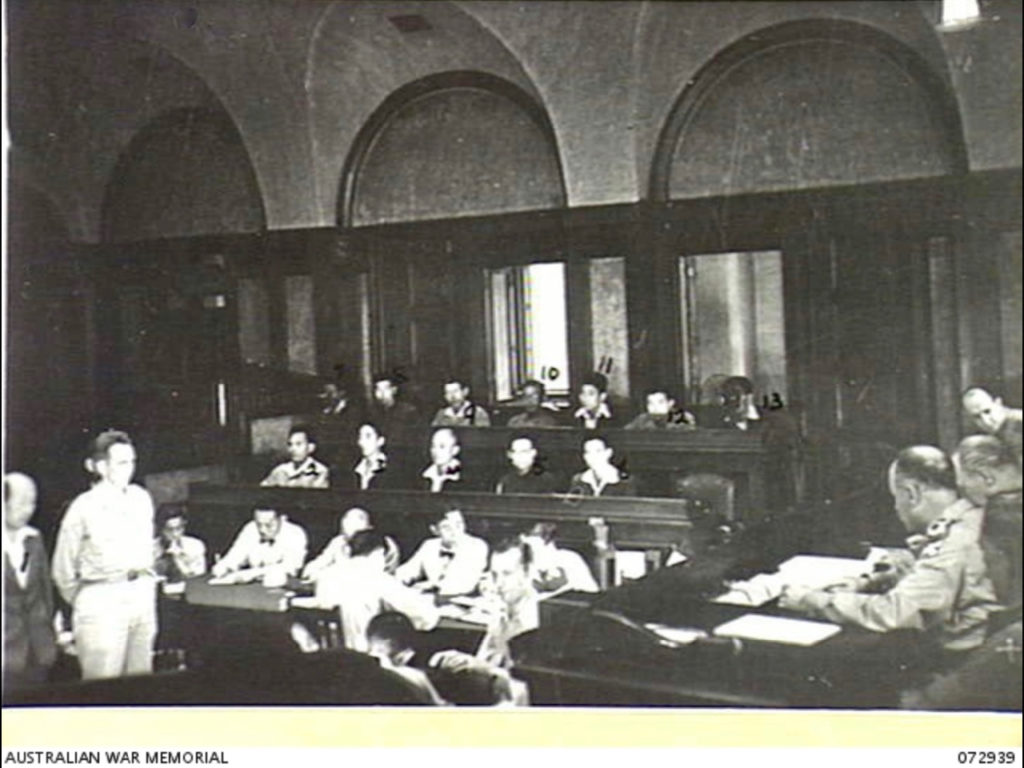Niihama, Hiroshima #2-B- Besshi Copper Mine, Japan Sumitomo
Sumitomo’s Yamane and Niihama, Besshi Copper Mine, Shikoko Island, Japan
Hiroshima 2B Niihama (formerly Zentsuji 3-B/Fukuoka 13-B)
Home to Sumitomo, Beshi Copper Mine.
Employed by Sumitomo
Yamane: Copper Mine & smelter
Niihama: Casting Foundry for machine parts and a land reclamation project.
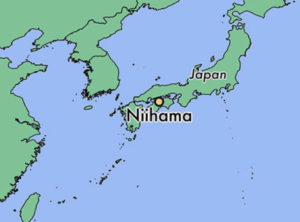

Back row: L-R Thomas Gibson, Bert Norton, Fred ‘Cowboy’ Matthews, Ralph Hadfield
Front row: L-R George Chatfield, Norm Thompson, Claude Dow, Andrew “Mick” Lambie
Yamane was Sumitomo’s Copper mine and smelter.
Niihama, Hiroshima #2-B- Japan -Sumitomo Casting Foundry for machine parts and a land reclamation project.
There were at least 37 men from 2/4th at this Camp and a total of 245 Australians of whom 18 died. Many Australians were sent from Thailand via Singapore sailed on ‘Rashin’ Maru which was a 70 day voyage.
There was also an unknown number of Dutch.****
On 18th May 1945 the prisoners were moved from Yamane where they were working at the Besshi copper mine to the wharves, smelters and refineries of Niihama. The reason for this move was simply because the men’s health had flagged so much that they were of no further use to the Japanese at the mine site.
Niihama
This was a Sumitomo Company business.
28 Aug 1945: First food drops
10 Sep 1945: Rescue Effected
Men sent by train through Zentsuji (picked up Yanks therein) then to port of Takamatsu thence ferry to Uno. Next train took men through Osaka to Wakayama.
The camp at Niihama, although different to Yamane, was of much the same construction. The barracks walls were constructed from pine wood and interlaced with a bamboo and an earth mixture plastered about 3 inches thick. The roof was also made of pine with natural fibre matting or bark laid over it. The latrines and pigsty were located at the end of the barracks. Unlike the barracks at Yamane, which was one long building, this was divided into two sections with the entrance in the centre instead of at each end as it was at Yamane. One half of the barracks was the sleeping quarters and the other for messing. The floor of the sleeping quarters was covered around the walls and down the centre with grass tatami mats. It was noted to be a good, clean camp and perhaps owned by industry not Government.
Following their arrival at Niihama the prisoners were allocated to the jobs that would keep them employed for the final months until Japan’s surrender. ‘Cowboy’ Matthews who was placed on light duties due to a tropical ulcer on his leg, worked in the cookhouse at Yamani and Niihama. Bert Norton was employed in the Iron Foundry cutting up steel hawsers with hammer and cold chisel into 3 inch lengths to make nails
Work was allocated to the prisoners at the copper refinery, No. 4 Party on the wharf, warehouses, iron foundry or stoking blast furnaces. At the engineering machinery foundry included amongst the Australian prisoners was Andrew ‘Mick’ Lambie who would clean up the castings as they were released from their moulds.
Several 2/4th who were employed on the wharves like the Kobe group, had the opportunity to scrounge extra food in the form of sweet potato and maize flour. Some of this crew were Bob Whitfield, Ken Tucker, Wilfred ‘Bill’ Nottle, Ray Muller, Lou Daily, Tom Conway and George Moir. At war’s end Bob Whitfield took his Japanese overseer and showed him the places where they used to hide the contraband. No doubt the Japanese overseer was impressed with the Australians’ ingenuity. In August, ‘Bill’ Nottle was knocked off the wharf by a crane and fractured his left ankle. This accident put him in the camp hospital for four weeks. Frank McGlinn whose diary was called upon to remind us of some facts about Niihama was one member from the 2/4th on the refining of copper.
Please read further
On 15th August the word around Niihama was that the war was at last over. The prisoners had been stood down from their various jobs whereupon they returned to camp. It would be another five days before Capt Marukami would inform them that the war might be over as fighting had been suspended.
YOKAHAMA, JAPAN, 1946. A GENERAL VIEW OF THE WAR CRIMES COURT WHILE MURAKAMI (1), A JAPANESE WAR CRIMINAL WAS SENTENCED TO DEATH FOR HIS TREATMENT OF ALLIED PRISONERS OF WAR AT NIIHAMA YAMANE (PRISONER OF WAR CAMP) AT HIROSHIMA. OTHER JAPANESE PRISONERS OF WAR AWAIT TRIAL IN THE BACKGROUND. IDENTIFIED PERSONNEL ARE:- KAWABATA (2); TANIMOTO (3); LIEUTENANT-COLONEL SHUZO SAITO (4); BEPPU (5); NISHIYAMA (6); COLONEL SUZUKI (7).
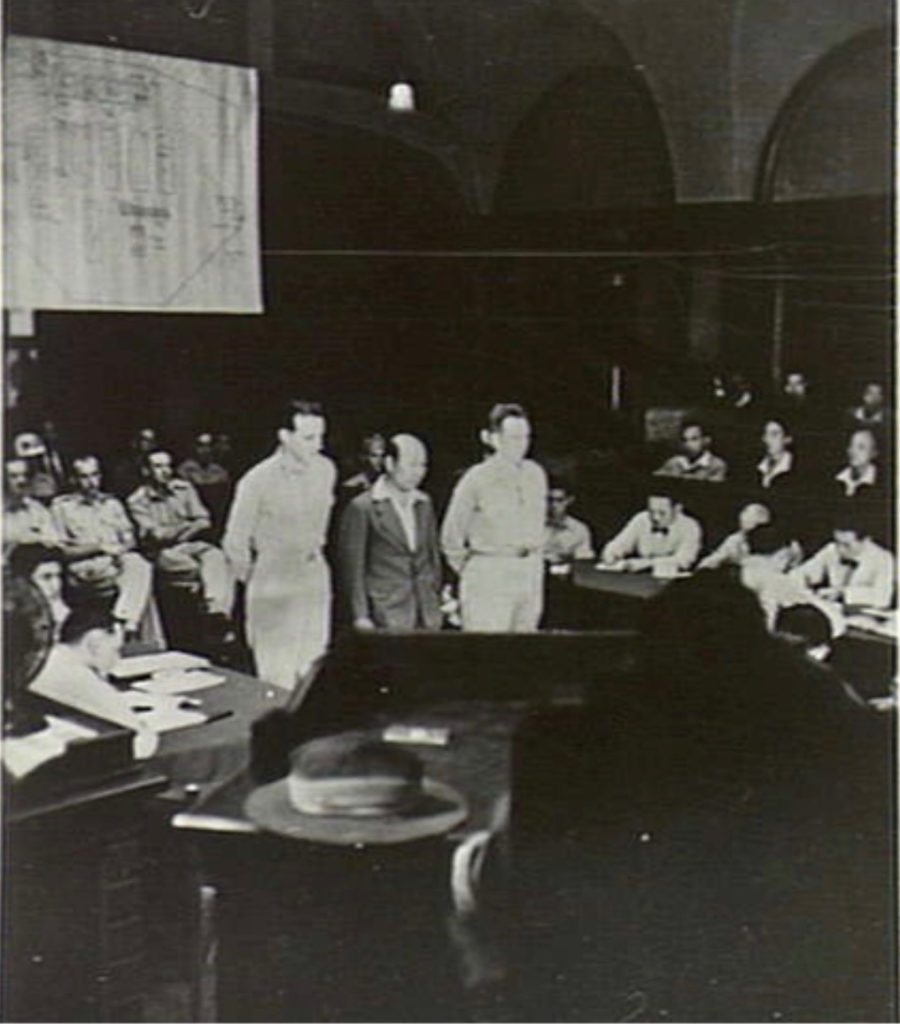

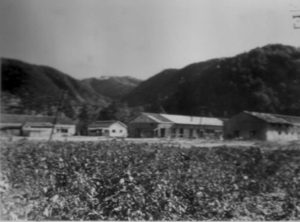
Please read Australian Dr. Hinder’s pertinent views on the atom bomb.
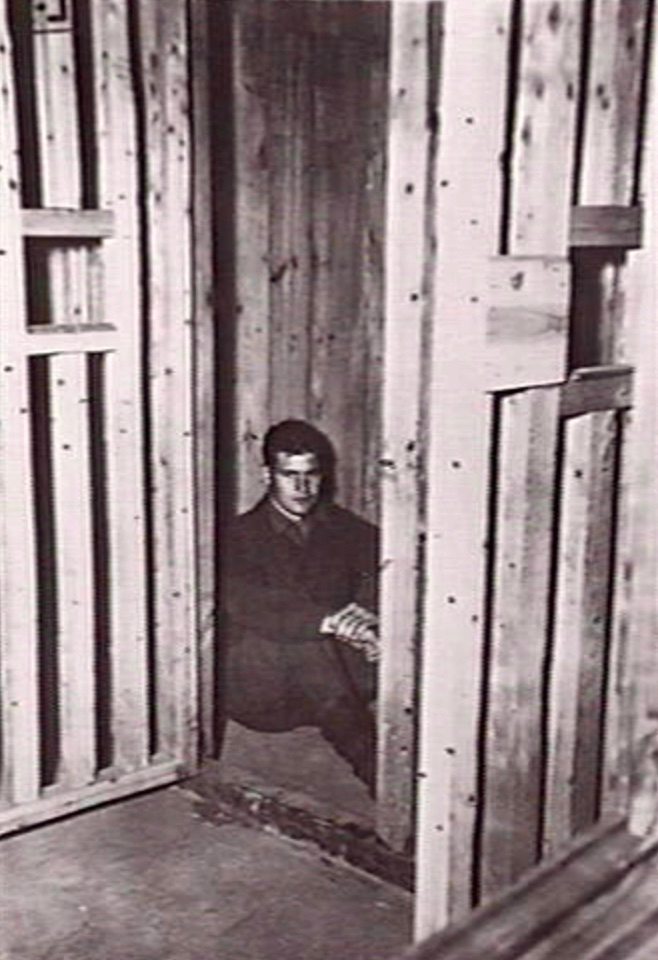
NIIHAMA ISOURA, JAPAN. C. 1945-11. ONE OF THE CONFINEMENT CELLS IN THE GUARD HOUSE AT THE HIROSHIMA PRISONER-OF-WAR BRANCH CAMP NO. 2. Courtesy AWM.
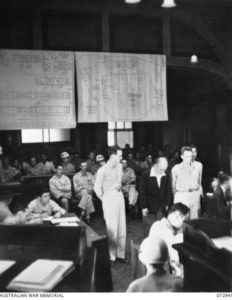
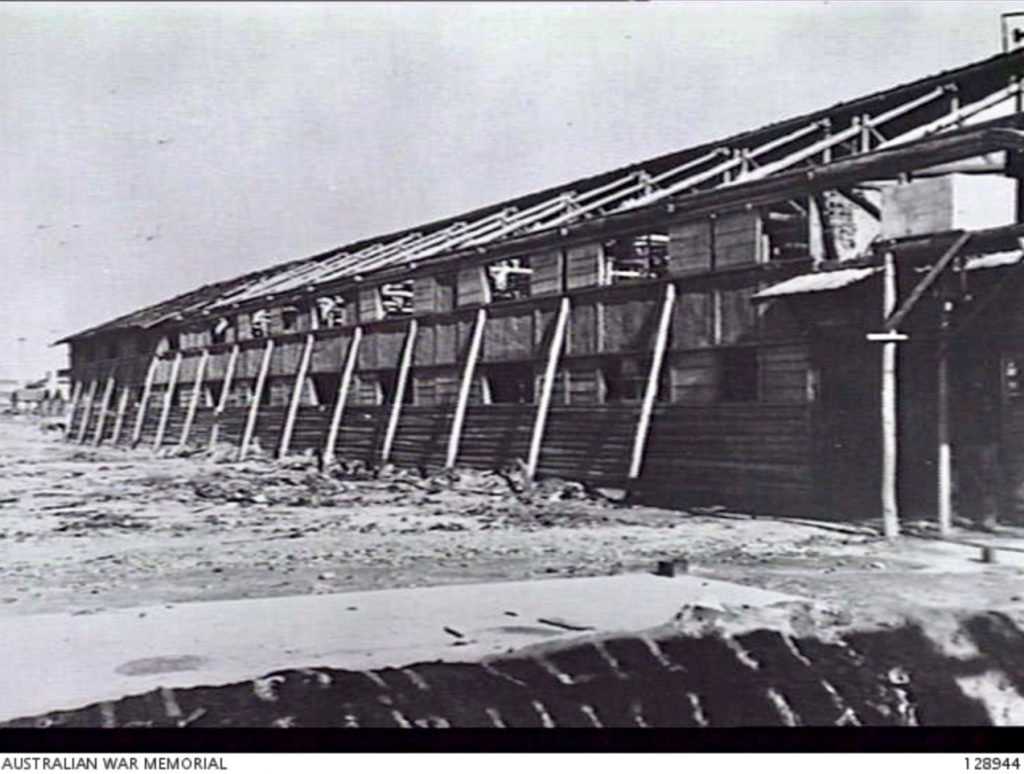
NIIHAMA ISOURA, JAPAN. C. 1945-11. INTERIOR VIEW OF THE PARTLY UNROOFED BARRACKS AT THE HIROSHIMA PRISONER-OF-WAR BRANCH CAMP NO. 2. (DONOR: R. H. MILLYNN).
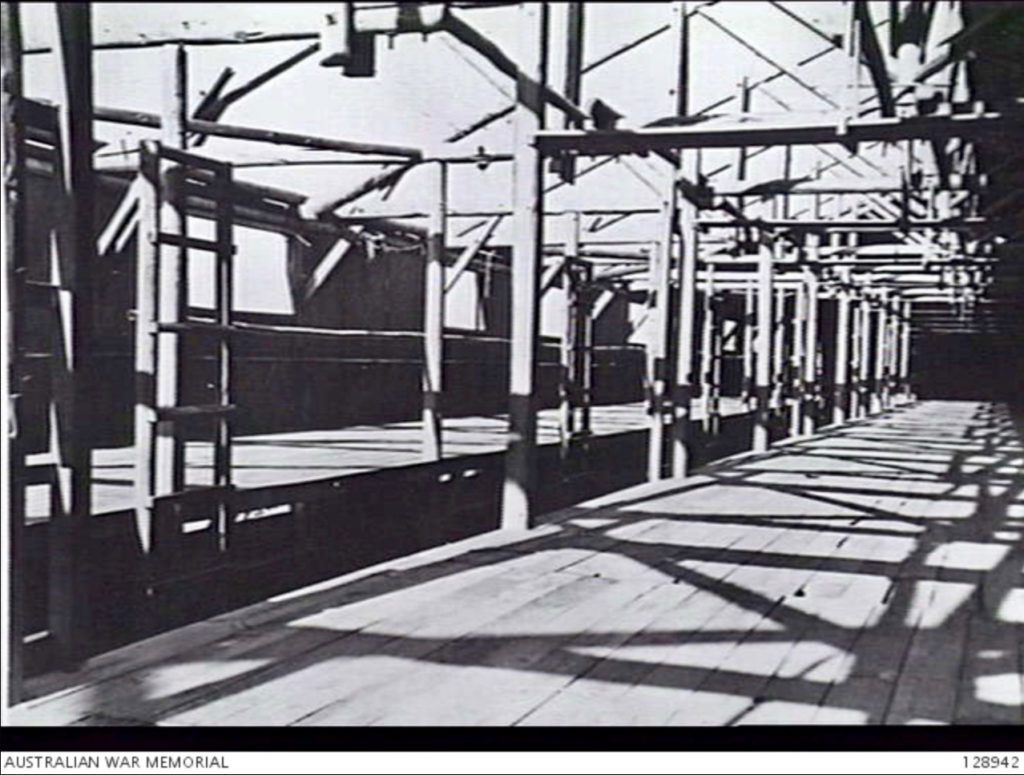
NIIHAMA ISOURA, JAPAN. C. 1945-11. THE PARTLY UNROOFED BARRACKS AT THE HIROSHIMA PRISONER-OF-WAR BRANCH CAMP NO. 2. (DONOR: R. H. MILLYNN).
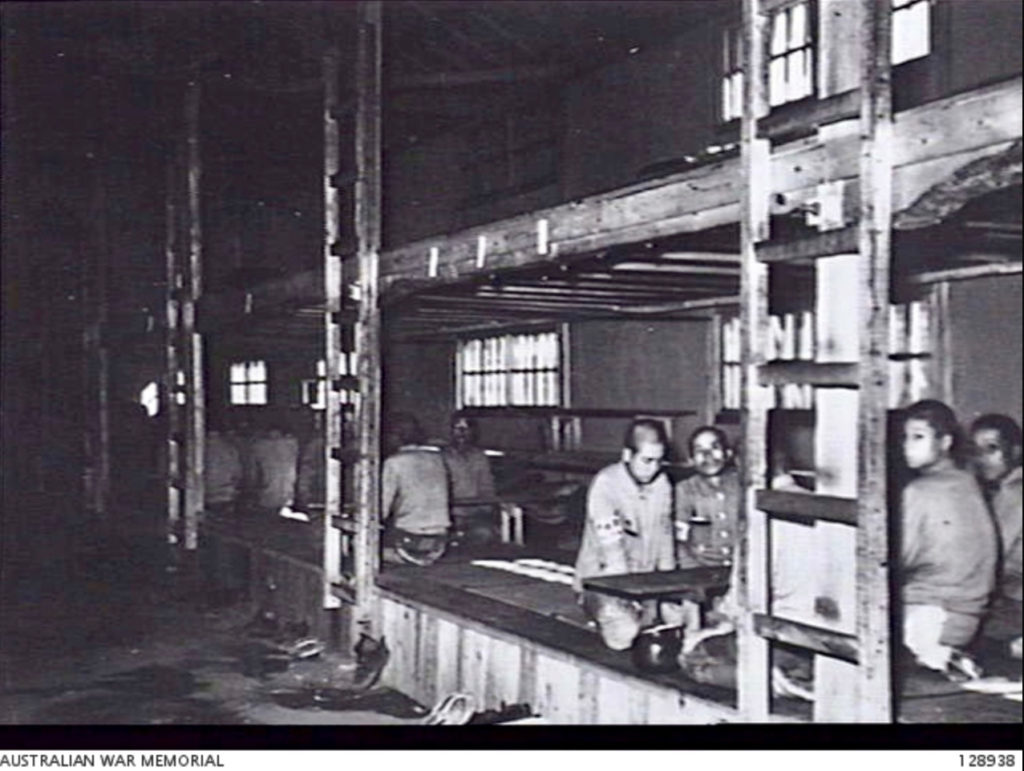
NIIHAMA YAMANE, JAPAN. C. 1945-11. INTERIOR VIEW OF THE BARRACKS AT HIROSHIMA PRISONER-OF-WAR BRANCH CAMP NO. 2. THE JAPANESE SHOWN HERE ARE CIVILIAN PRISONERS WHO WERE RECENTLY MOVED INTO THIS PARTICULAR PRISONER-OF-WAR CAMP. (DONOR R. H. MILLYN)
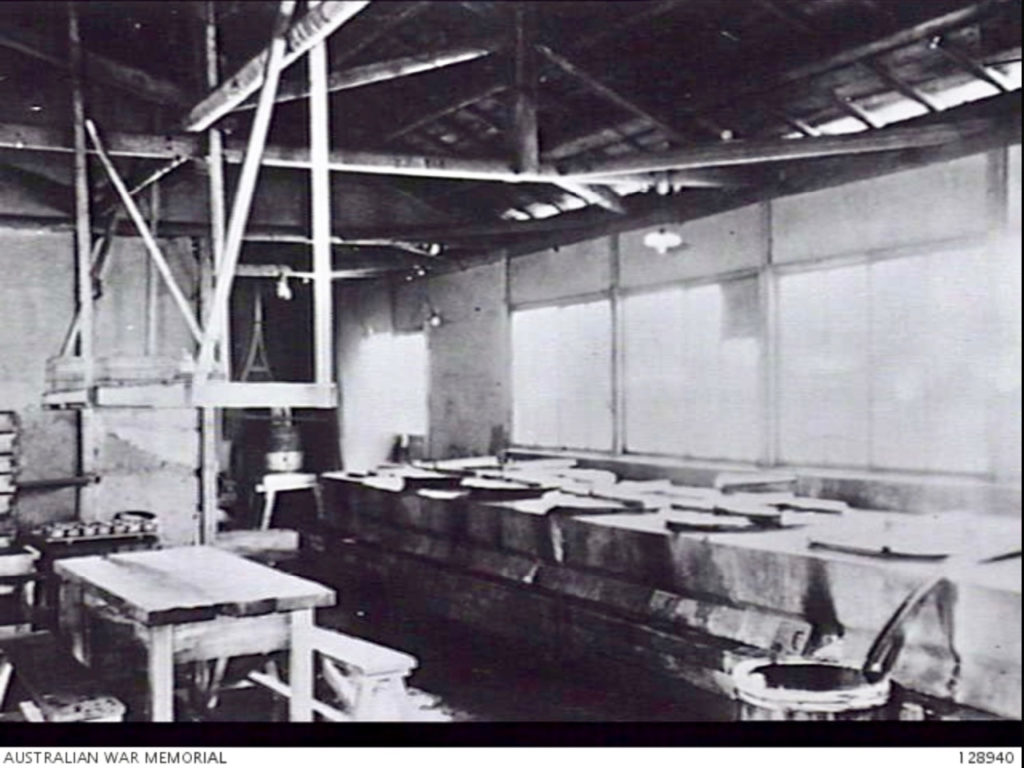
NIIHAMA YAMANE, JAPAN. C. 1945-11. THE KITCHEN AT THE HIROSHIMA PRISONER-OF-WAR BRANCH CAMP NO. 2.
We wish to acknowledge and thank the AWM for the above photographs.

YOKAHAMA, JAPAN, 1946. NISHIYAMA, A JAPANESE WAR CRIMINAL, BEING SENTENCED TO 40 YEARS IMPRISONMENT AT THE CONCLUSION OF HIS TRIAL FOR WAR CRIMES COMMITTED AT NIIHAMA YAMANE (PRISONER OF WAR CAMP), HIROSHIMA.
Please read Australian Dr Hinder’s words about Niihama and Atomic Bomb
Below: The last page of the listed POWs from Niihama recovered at end of war – please note comments at bottom.
We acknowledge and thank Mansell’s website for this information. Pls note this was the final page included.
Below: List of Australians who died at Niihama – including Cpl Dick Hindle who died in an accident below ground.
Hindle aged 40 years, was killed by a fall of rock at Sumitomo Besshi copper mine at Yamane on Shikoku Island Japan on 30.9.1944. His body was cremated and his ashes were carried as far as Labuan Island.
Records show ‘Died after leg severed by fall of stone. (Japanese records state ‘Contusion of the head’).
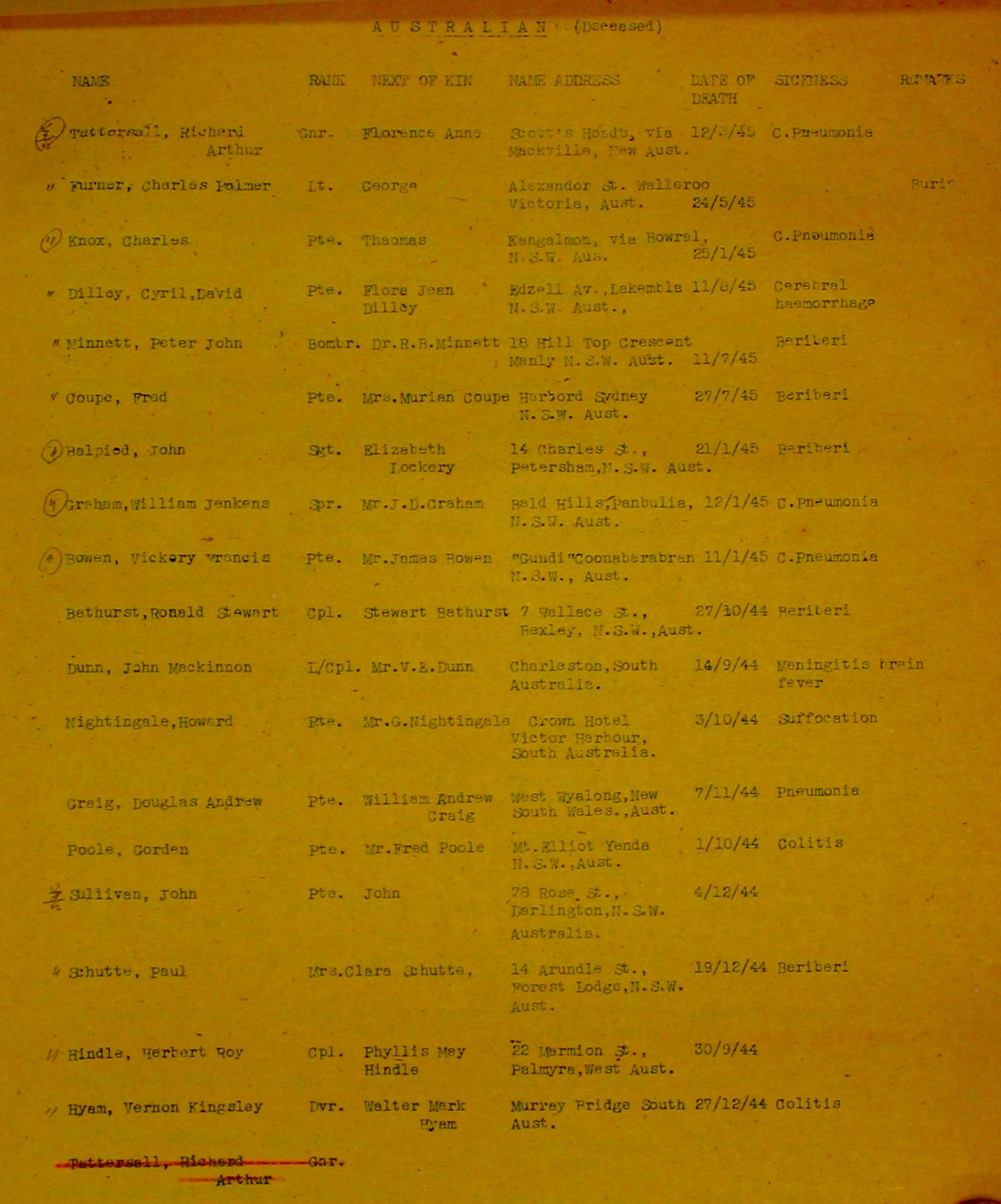
Below: Australian Roster for Niihama – we acknowledge Nigel Mansell’s website and thank them for copy.

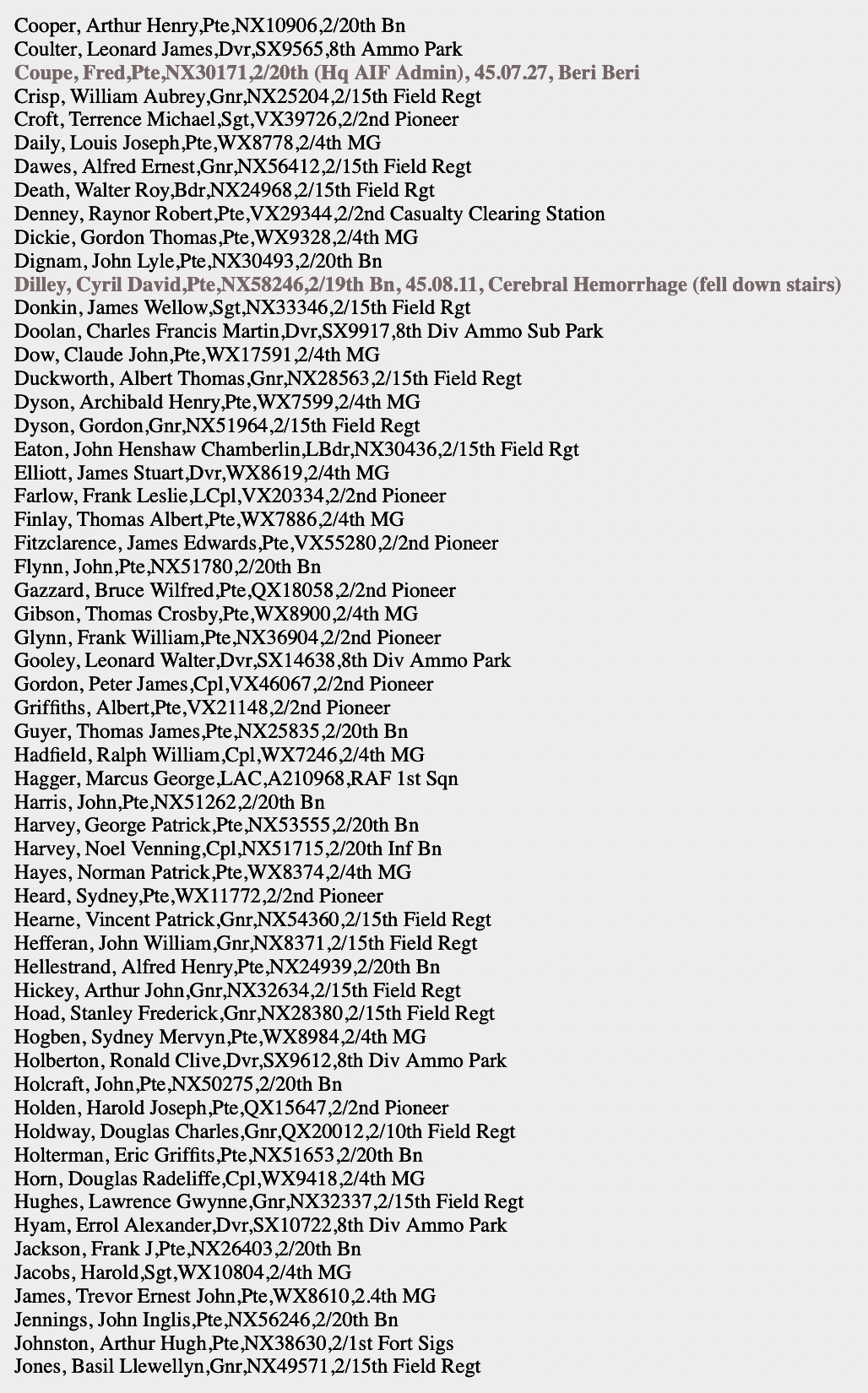

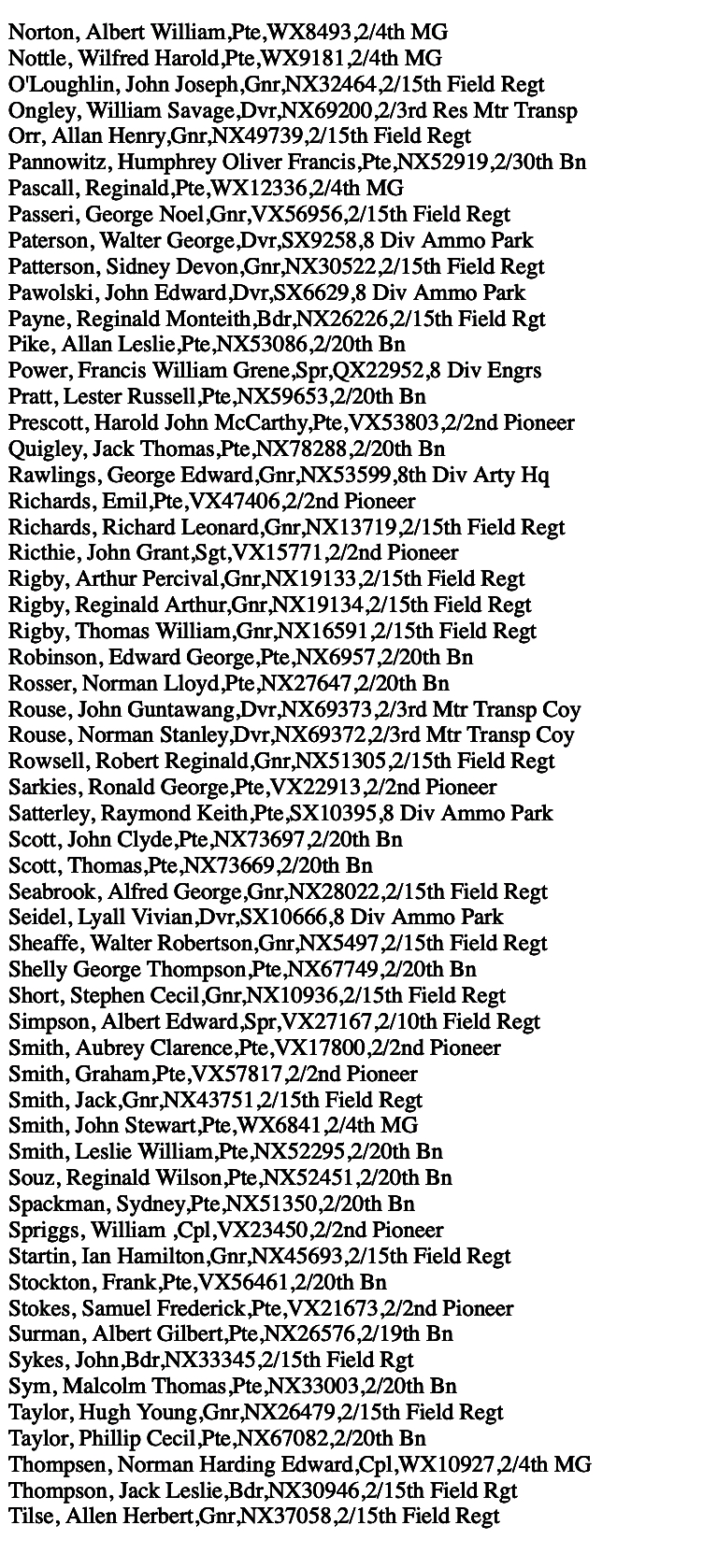
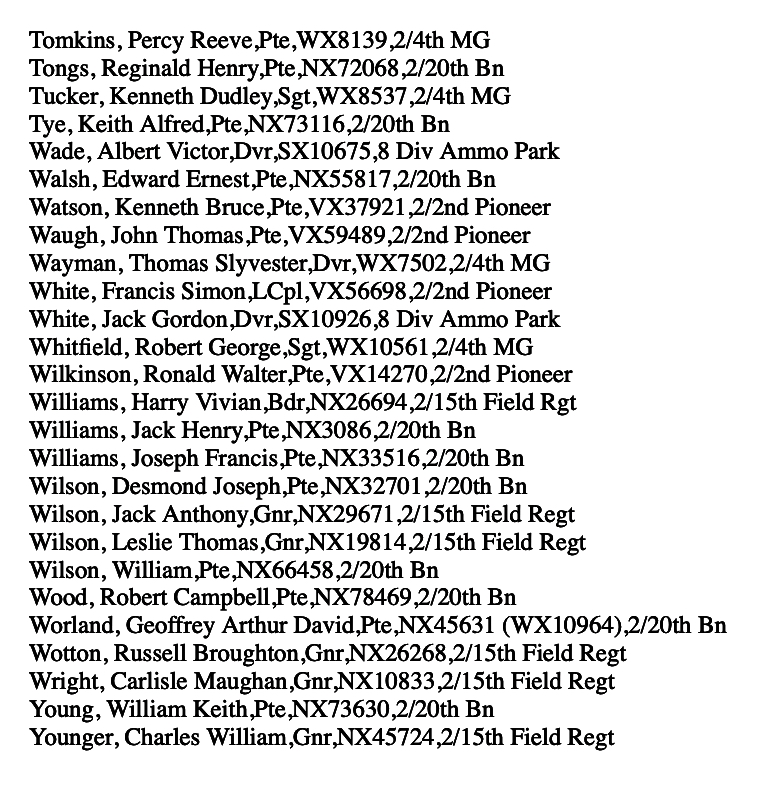
(The following information has been researched from the Affidavits prepared by the two Dutch Camp leaders – Kruythoff and Otten.)
1,000 Dutch POWs departed Singapore 2 April 1943 on ‘Hawai’ Maru for Japan. Conditions were very poor and an epidemic broke about within two weeks.
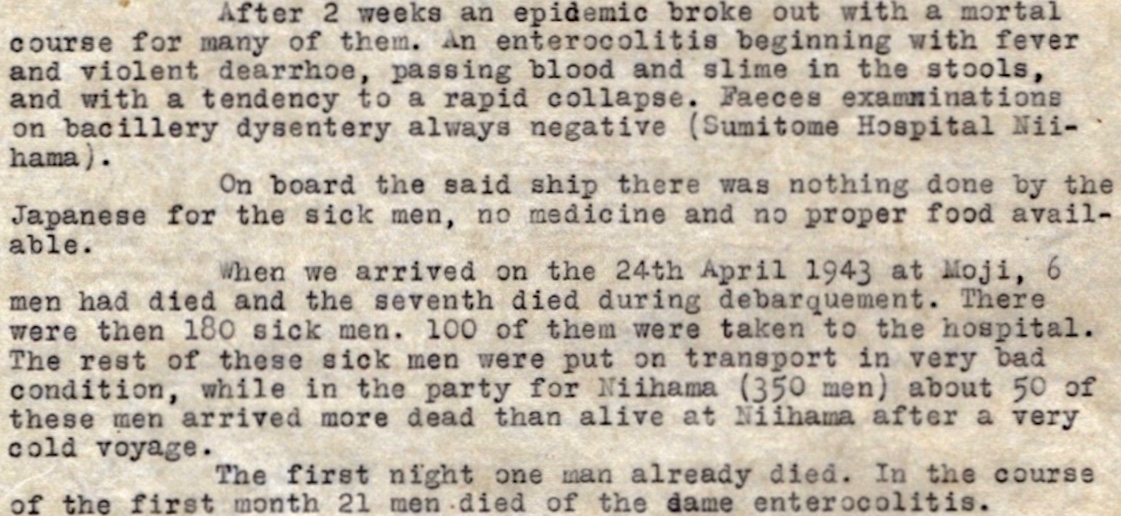
350 Dutch POWs under the leadership of Capt. CGJ Tielenius Kruythoff arrived Niihama 25 April 1943. The group was split into two with1st Lt. Otten taking command of the second group.
The POWs arrived in poor physical health following their sea journey, but were forced to take journey to Niihama. During the first month 21 men died. Their food and medicine was completely inadequate.
The Camp Commander was Morakami. He was approached many times by the Dutch for improved food and supply of medicines. He received a death sentence after the war.
By end of Nov 1943 the two Dutch groups were rejoined in a newly constructed camp – however the two groups continued working separately for two separate Sumitomo units.
The food was the best it ever would be around Christmas 1943 and thereafter the quality and quantity deteriorated and in May 1944 the work load increased. Now in conjunction with their Sumitomo work the POW’s workload increased back at camp in particular having to work in the Camp Garden very early in the morning and late at night.
Nearer the end of the war the Camp was joined by about 25 Australians and 50 Dutchmen from Yamane near Niihama, and 35 Officers from Zentsuji, also on Shikoku.
Kruythoff and Otten recorded the appalling conditions – finally 30 Dutch and 3 Australians died at Niihama.
Kruythoff and Otten’s final words, other than they dreaded the 1945 Japanese winter because the POWs are at their lowest physical level.
Murakami, known as ‘Lopper’ was sentenced to death. These Dutch POWs had been subjected to his laws since April 1943, i.e. nearly 2 1/2 years.
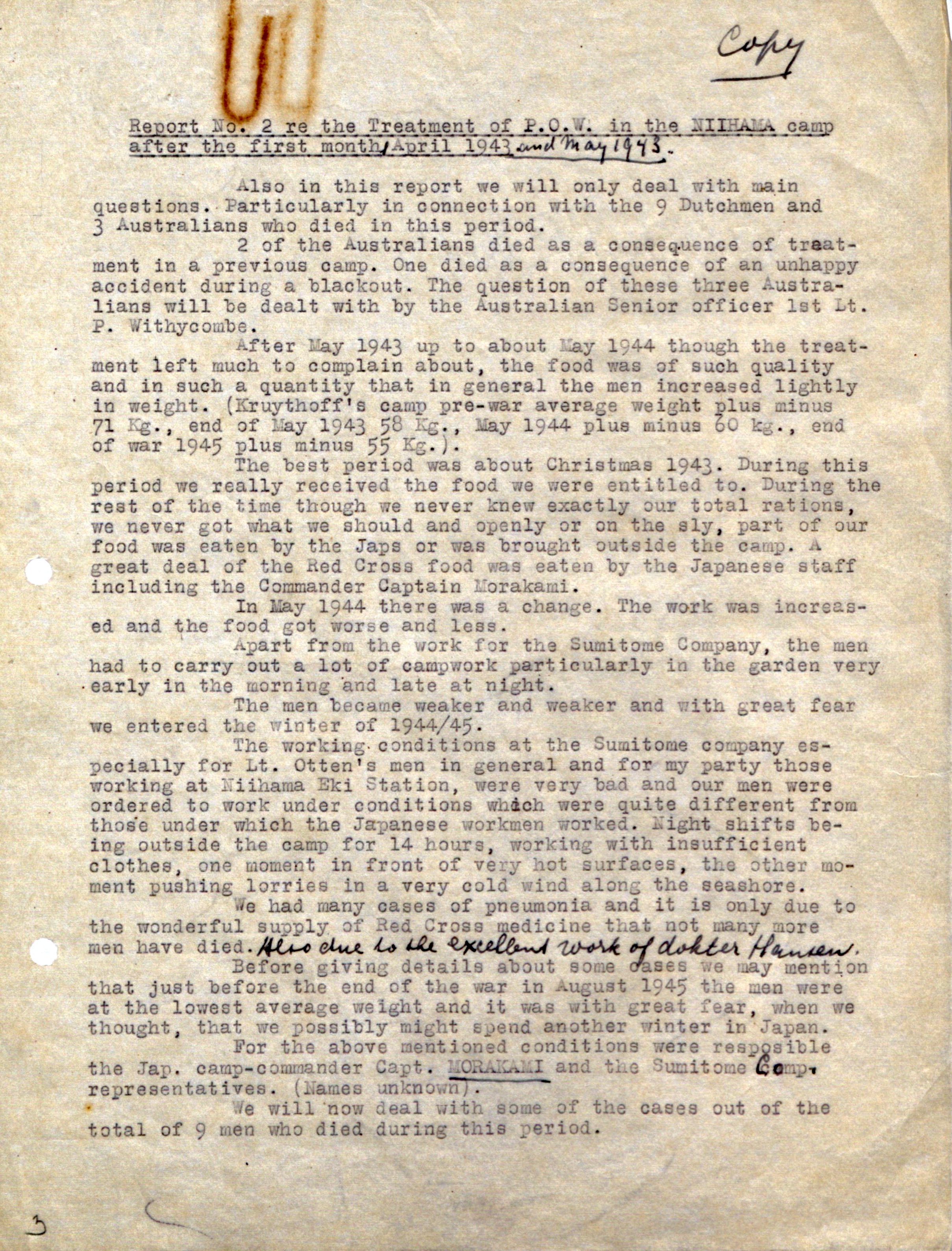
Please read Frank McGlinn’s diary with details of last days at Niihama Camp
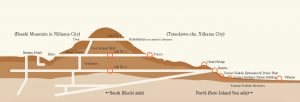
Please go to this Sumitomi Website for further information about Besshi Copper Mine.
https://www.sumitomo.gr.jp/english/history/besshidouzan/index04.html
Please view the Besshi Museum.
https://www.sumitomo.gr.jp/english/history/related/besshidouzan/
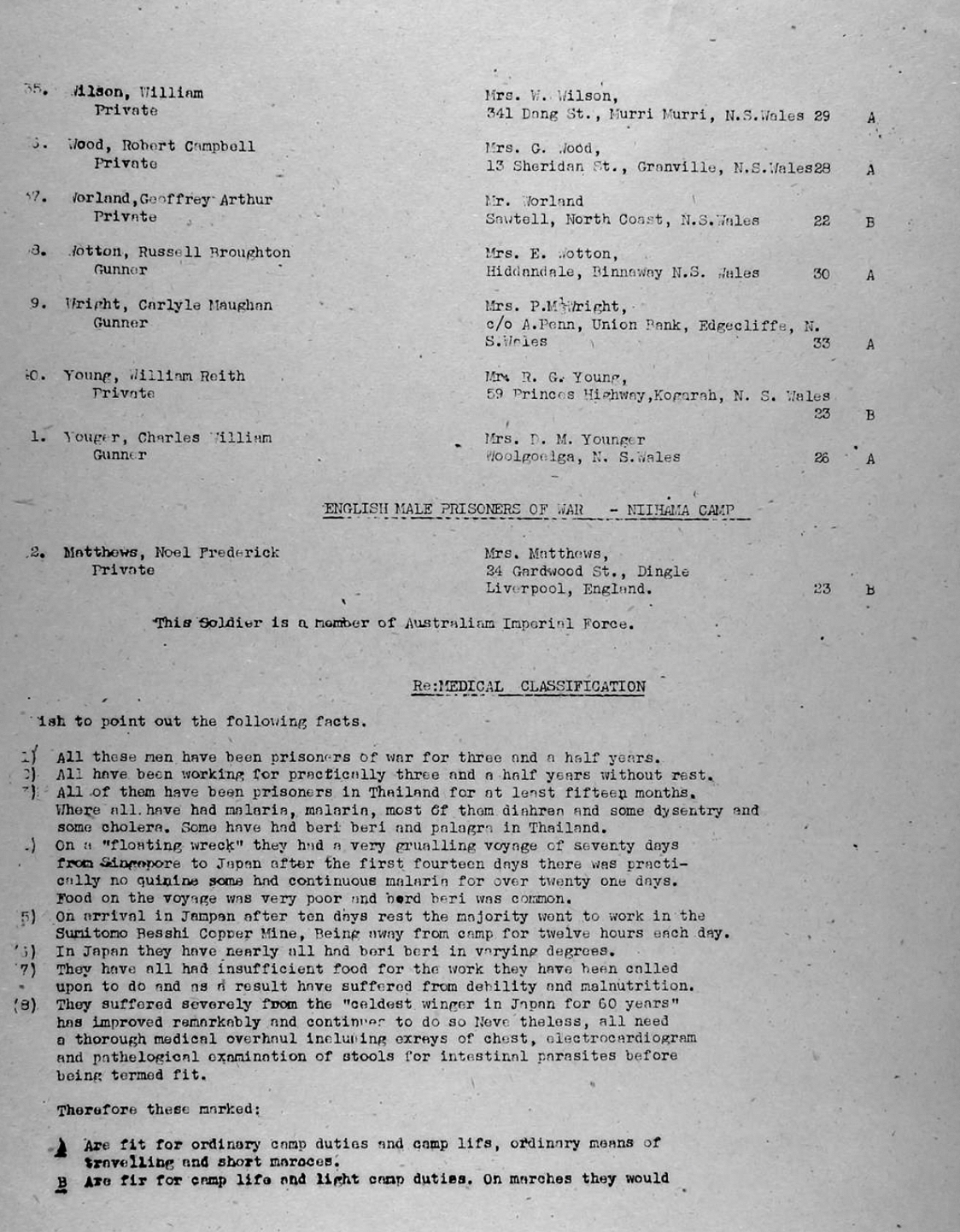
Tokyo War Trials Results:
Capt Murakami (Camp Commander) – “Lopper”
Unknown guard: “Mickey Mouse”
Oka San – “Happy”
Photos from Tokyo War Crimes Trials:
Colonel Shuzo Saito, sentenced to death
Colonel Suzuki, 15 years imprisonment, sentenced to death
Colonel Suzuki, 15 years imprisonment
Murakami, sentenced to death
Nishiyama, 40 years imprisonment
Tanimoto, 35 years imprisonment
Okada, 20 years imprisonment
Yamamoto, 15 years imprisonment
Shirasaya, 6 years imprisonment
Ika, 5 years imprisonment
Kawabata, 5 years imprisonment
Beppu, 5 years imprisonment
Hirai, 1 year imprisonment

